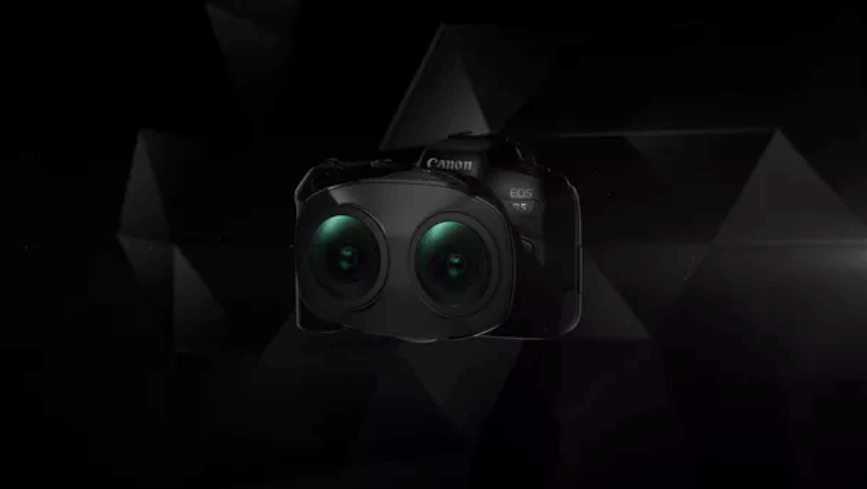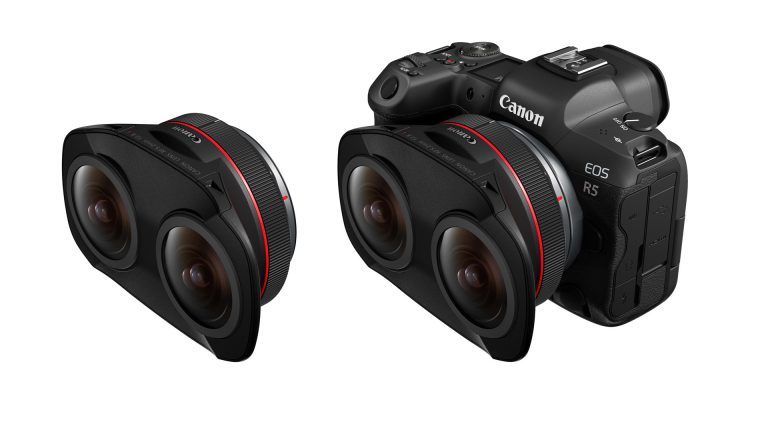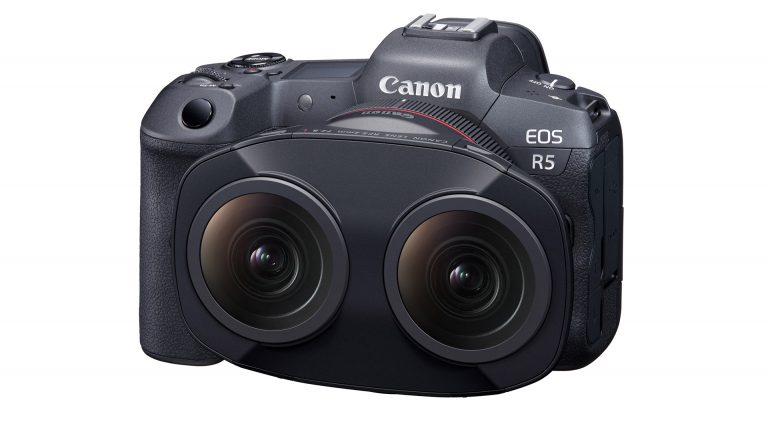
Many people believes immersive media VR video is the future of filmmaking, yet the current state of technologies has made the production process less than easy that involves complex equipment and tedious post-production workflows.
This is why immersive VR videos hasn't seen nearly as much market traction than pre-rendered CGI content, except for watching porn.
World leading camera producer, Canon, announced a new generation of 180 degree stereoscopic lens to support the creation of future VR content, alongside with their latest software tools.
The new dual-optic lens captures 180 degree view via a single sensor through Canon's top of the line EOS R5 camera.
Canon calls it the EOS VR System which includes their newest dual optic camera lens, latest firmware for the EOS R5 system to assist with immersive content capturing, and post-production processing.

What's particularly interesting is the RF5.2mm F2.9 L Dual Fisheye lens as it captures both views onto a single sensor on the Canon EOS R5 camera. Although both views are captured in a single frame where the resolution is divided, it simplifies the process of capturing 180 degree images since both views have matching alignment, colors, calibration, time synchronization, and focus.
The type of capturing means that the final output is one single file for both eyes, as opposed to capturing singe eye in separate files that requires post-production stitching.
The lens has an aperture of f/2.8 to f/16 that can be focused up to 8-inches. The distance is fixed at 60mm between the lenses to be closed to normal human IPD. Canon is working on updating the Canon Connect and EOS Utility programs to provide live-view for shooting and monitoring remotely.

The camera will be available at the end of the year with a price tag of $2,000. Canon will also release two subscription-bases software for Adobe Premiere Pro, that is, the EOS VR Utility and the EOS VR plug-in.
Canon believes the new lens achieved an important milestone for the company to provide the tool to enable future VR content creation. This latest RF lens captures VR content in 8K, and sets itself apart via the streamlined workflow. According to Tasuro (Tony) Kano, EVP and GM of Canon Imaging Technologies & Communication, the company wishes to empower the mass majority the ability to produce immersive storytelling content.
At VRR, we truly believe the future of immersive media is in volumetric video capturing, this means the viewer can walk in the scene through 6 degree of freedom (6DOF), as opposed to 3DOF which the viewer feels like is tied to a pole. Early pioneers such as NextVR and Lytro have attempted to commercialize volumetric capturing, but NextVR ultimately acquired by Apple before being able to take things to the market, while Lytro was reportedly acquired by Google.

